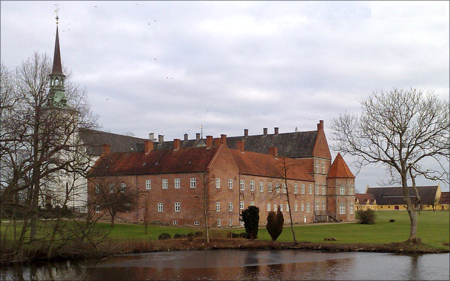Brahetrolleborg

Brahetrolleborg (lit. 'Brahetrolle Castle') is a castle about 10 kilometres north-west of Fåborg on the Danish island of Fyn. Before the Reformation, the structure was a Cistercian monastery known as Holme Abbey (Danish: Holme Kloster; Latin: Insula Dei). After the reformation, the property was renamed Rantzausholm in 1568 before receiving its current name in 1667. The church dates to the 13th century, while the main structure was originally constructed in the 15th century. Significant extensions and refurbishments have changed the building since, altering its original romanesque style. The estate has been owned by the Reventlow family since 1722. It is currently owned by Catharina Reventlow-Mourier, the 9th generation of the family. Together with the neighboring Brændegård property, the estate covers a total of 2607 hectares, much of which is forest.
Excerpt from the Wikipedia article Brahetrolleborg (License: CC BY-SA 3.0, Authors, Images).Brahetrolleborg
Brændegårdsvej, Faaborg-Midtfyn Municipality
Geographical coordinates (GPS) Address Nearby Places Show on map
Geographical coordinates (GPS)
| Latitude | Longitude |
|---|---|
| N 55.15 ° | E 10.366666666667 ° |
Address
Brændegårdsvej
Brændegårdsvej
Faaborg-Midtfyn Municipality
Region of Southern Denmark, Denmark
Open on Google Maps







